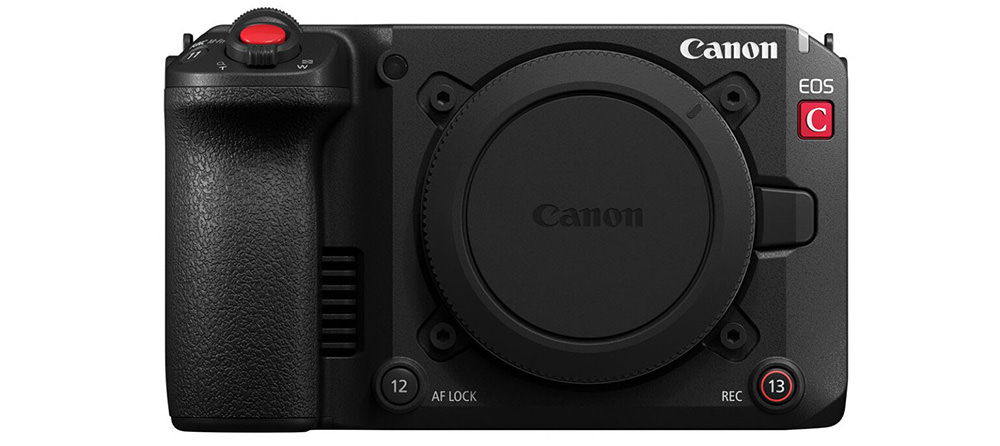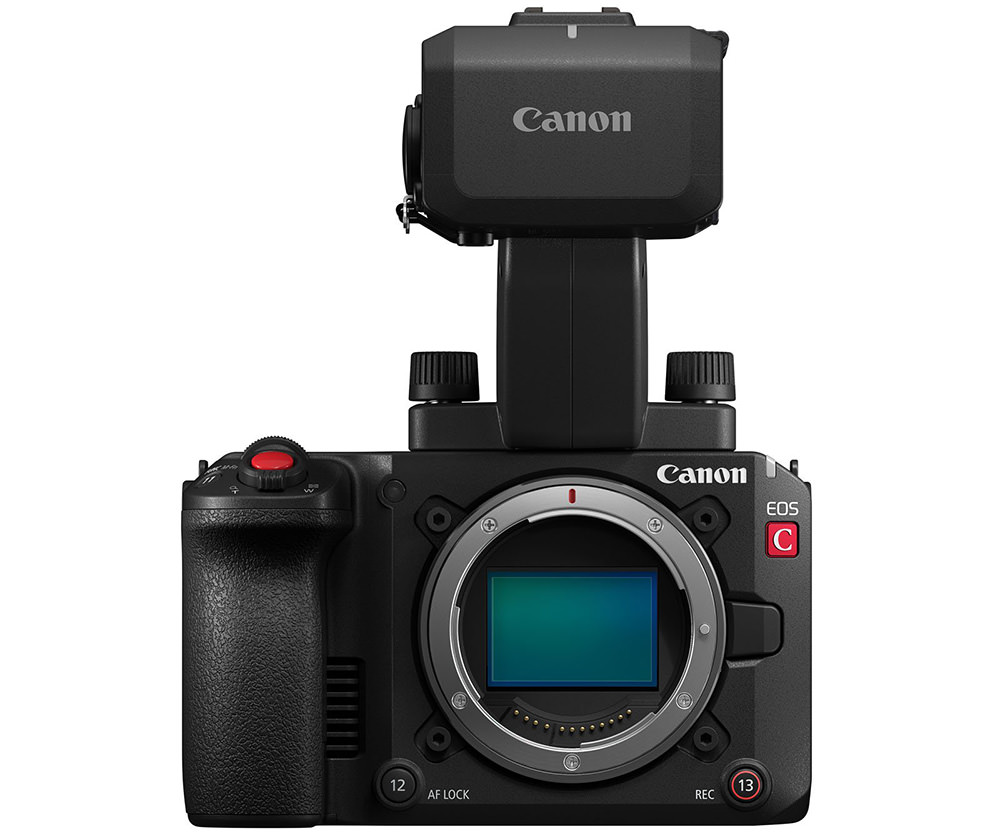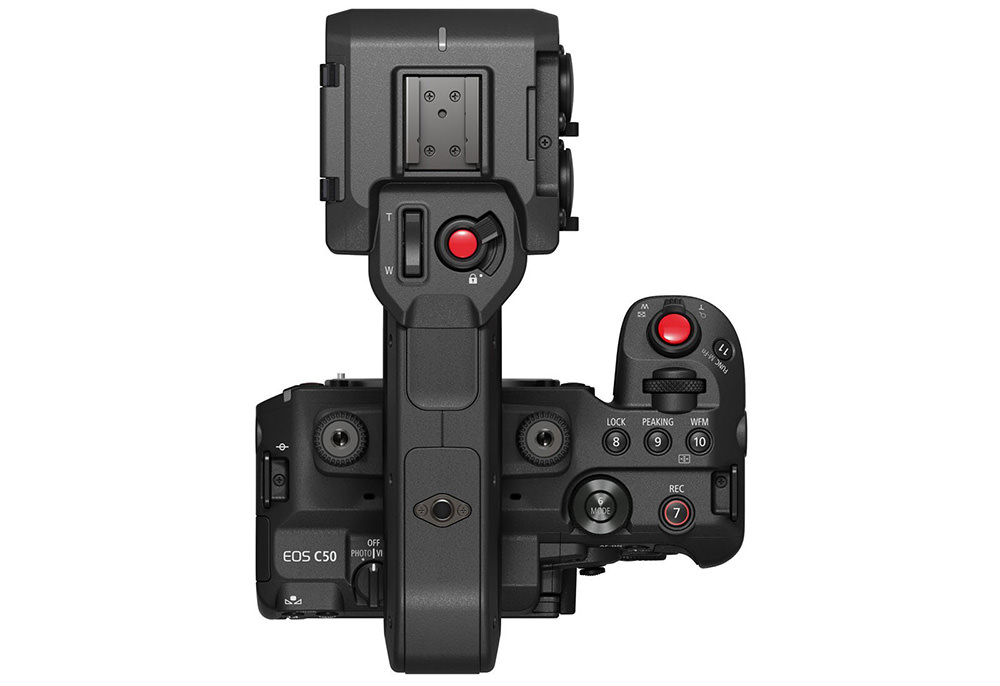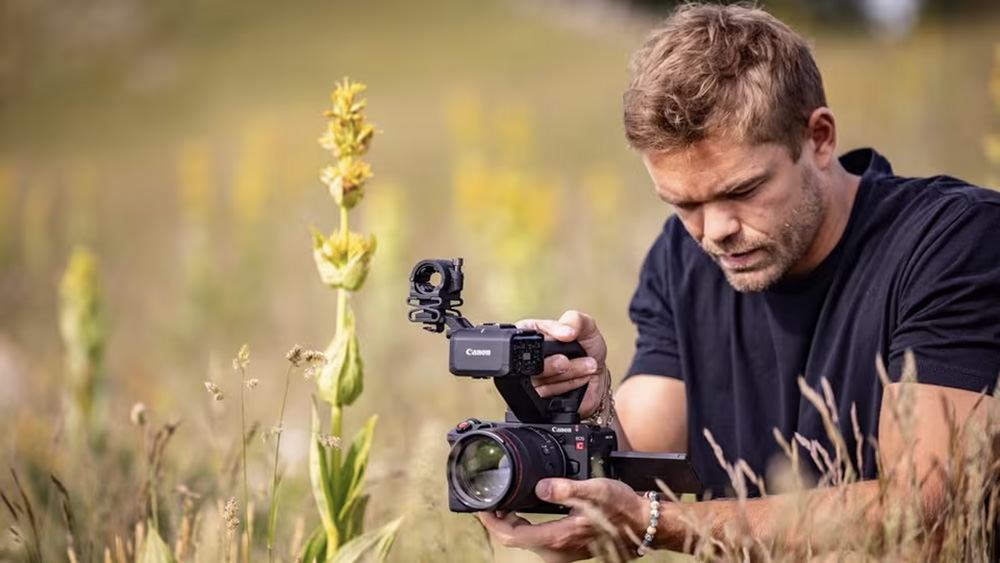Canon Unveils EOS C50 Full-Frame Cinema Camera
Canon has introduced the EOS C50, a compact full-frame cinema camera positioned as the smallest model in the Cinema EOS range. It incorporates a newly developed 32-megapixel CMOS sensor capable of 7K recording up to 60p in Cinema RAW Light, oversampled 4K up to 60p, and 4K recording at 120p. The camera also delivers 32-megapixel still images at up to 40 frames per second, though it lacks a mechanical shutter, which limits its use with flash.
The body weighs 665 grams and measures 143 × 88 × 95 mm without its detachable handle unit. The handle, which adds 445 g, includes two XLR inputs, a zoom rocker, audio controls and a record button. The camera omits an electronic viewfinder, relying instead on a 3-inch fully articulating rear touchscreen. Its design incorporates multiple 1/4-20 mounting points, a front tally lamp, cooling vents, customizable buttons and a zoom lever compatible with Canon’s power zoom RF lenses.
Internally, the EOS C50 is powered by the DIGIC DV7 processor and supports recording formats including Cinema RAW Light, XF-AVC, XF-AVC S and XF-HEVC S. It features dual card slots—one CFexpress Type B and one SD UHS-II—that allow simultaneous recording of landscape and portrait video files. Open gate recording in 3:2 format is supported, making the camera compatible with anamorphic workflows. Canon states the sensor offers dual base ISO levels of 800 and 6400 in Canon Log 2, with up to 16 stops of dynamic range.
In video modes, the camera captures 12-bit RAW in several frame rate and resolution combinations: up to 7K60 in RAW ST and LT modes, 7K30 in RAW HQ, 5K60 in Super 35 crop, and 2.5K60 in Super 16 crop. Slow and fast motion is possible at up to 120p in 4K. The system lacks in-body stabilization and internal ND filters, requiring users to rely on external solutions.
Connectivity includes a full-size HDMI output, timecode terminal, USB-C port, microphone and headphone jacks and Wi-Fi and Ethernet support via adapter. Frame.io Camera to Cloud is integrated, and the camera is compatible with Canon’s XC protocol for virtual production and remote control. It also supports UVC/UAC for direct webcam use.
Autofocus is handled by Canon’s Dual Pixel CMOS AF II with subject detection for humans and animals, available in both still and video modes. The camera also supports flexible autofocus zones, digital zoom and an automatic shutter mode for run-and-gun shooting.
The EOS C50 is powered by the LP-E6P battery, introduced with the EOS R5 II, providing up to 90 minutes of continuous RAW recording. Older LP-E6NH batteries are compatible but limit performance and reduce runtime. External power through DC or USB is also possible.
The Canon EOS C50 is expected to be available in November 2025 for $3,899.






